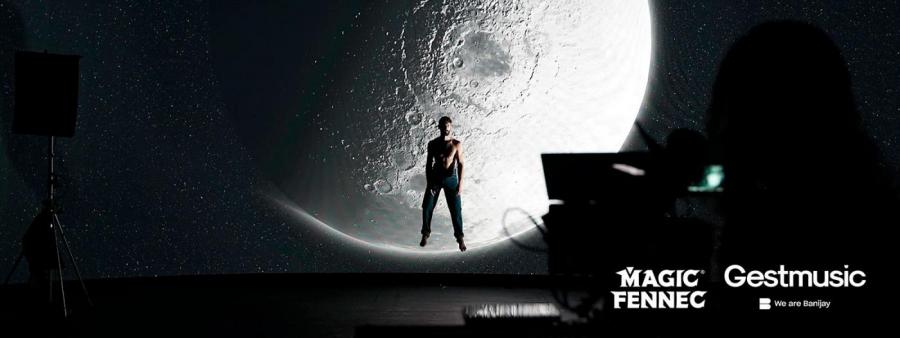Virtual Reality & Art | Immersive Virtual Experiences

VR technology allows artists to create immersive experiences that transcend the boundaries of traditional art, offering viewers a completely new way to interact with art. This transformation rethinks the meaning of creating and consuming art, introducing new dimensions of interactivity and participation.
In this article, we will explore how virtual reality is transforming the art world and what immersive experiences are on the rise.
New ways of artistic creation, what is virtual reality?
Virtual reality is a technology that uses computer-generated environments to simulate a realistic experience. Through devices such as VR headsets and haptic gloves, users can interact with these environments in a way that makes them feel as if they are physically present in them. This sense of presence is key to immersion and is achieved through a combination of high-quality graphics, immersive sound and, in some cases, tactile feedback.
Virtual reality is not only being used in video games and simulations, but is also being adopted by artists to create innovative artistic experiences.”
This opens up a wide range of possibilities for applications in a variety of fields, including art. Artists can create entire worlds in which viewers can immerse themselves, exploring every detail at their own pace. In addition, VR enables the creation of experiences that would be impossible in the physical world, such as manipulating large-scale objects or exploring fantastical environments.
These possibilities are changing the way we conceive and experience art.
The convergence of art and virtual reality
Artistic creation in virtual reality
Virtual reality offers artists a tool to help them explore new dimensions of creativity. Programs such as Tilt Brush and Medium from Oculus allow artists to paint and sculpt in three dimensions, creating works of art that can be explored from all angles. This ability to work in a three-dimensional space opens up a new layer of depth to the creative process.
In addition, virtual reality allows for the fusion of different artistic disciplines. An artist can combine elements of painting, sculpture, music and storytelling into a single immersive experience. This not only enriches the artwork, but offers viewers a more impactful multi-sensory experience.
The ability to interact with the work in real time also adds a dimension of personalization and participation that is difficult to achieve with traditional media.
Virtual exhibitions and museums
Different museums and art galleries are embracing virtual reality to reach global audiences. Museums such as the Louvre and the British Museum have launched virtual tours that allow users to explore their collections in detail, offering an enriching and accessible experience.
One of the most common uses of VR in art is the creation of virtual museums. These spaces allow visitors to explore art collections from the comfort of their homes. These experiences are not only accessible, but can also provide additional information and historical context that enrich the visit.
Interactive performances and installations
Virtual reality is also transforming performances and art installations. Artists can now create interactive experiences where viewers observe and participate in the artwork.
In addition, interactive installations can be designed to suit different levels of skill and experience, allowing each user to participate at their own pace. This can make art more accessible and appealing to a wider audience, including those who may not have a prior interest in art. The ability to interact with the artwork can also make the experience more meaningful, creating a deeper connection between the viewer and the artwork.
Prospects for virtual reality and art
The future of virtual reality and art is exciting and full of possibilities. As technology advances, virtual experiences will become even more realistic and immersive. Artists will continue to explore new forms of expression and viewers will have access to a world of unlimited creativity.
From the creation of three-dimensional works to virtual exhibitions, virtual reality is redefining the boundaries of art and offering new opportunities for innovation and emotional connection.
Education in virtual reality and arts’ industry
The growth of virtual reality in art has driven demand for professionals trained in this technology. Educational institutions and training programs are developing specialized courses to prepare the artists and creators of the future.
Current Education News
-
University degrees: Many universities are incorporating virtual reality into their art and design programs.
-
Digital art schools: Institutions and schools are offering programs dedicated to virtual reality content creation.
-
Online Platforms: Platforms such as Coursera and Udemy offer online courses on artistic creation in virtual reality, accessible to anyone interested in learning about this technology.

MASTER IN FICTION VIRTUAL PRODUCTION IN UNREAL | LA SALLE-URL
Benefits of VR Education
-
Technical Skills Development: Virtual reality training courses provide students with the technical skills needed to create VR content, including the use of 3D modeling software and VR development tools.
-
Creative Innovation: VR training fosters innovation, allowing artists to experiment with new forms of expression and explore the creative possibilities of this technology.
-
Career Opportunities: With the growing demand for immersive experiences, VR-trained professionals have a wide range of career opportunities in sectors such as entertainment, education and marketing.
The Master in Virtual Production for Fiction is born from the need to train the new professional roles that the fiction production industry demands. A proposal taught with Gestmusic and Magic Fennec, leaders in the audiovisual production industry and virtual production.
Through an immersion in Unreal Engine 5, you will learn how to implement realistic and dynamic virtual environments, creating scenes and characters that interact naturally with lighting and physical effects, all in real time.
The program will take place on the 'IASlab', the new project that will turn 'La Salle University Campus' into a point of audiovisual attraction in Europe, thanks to its facilities and cutting-edge technological equipment for virtual production.